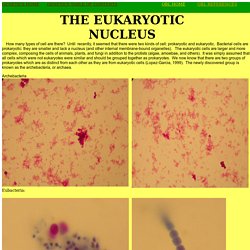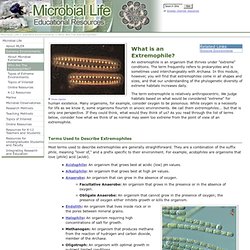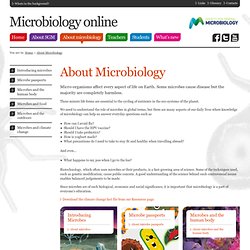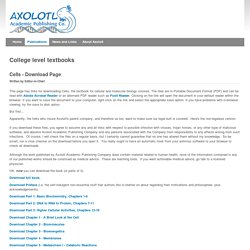

Acetylserotonin O-methyltransferase - DrugBank. Untitled Document. Comparisons of gene sequences indicate that eukaryotes resulted from a combination of genomes most similar to those of thermoacidophilic archaebacteria and gram negative eubacteria.

Most genes involving the processes of information transfer in eukaryotic cells seem to have derived from archaea. A number of eukaryotic genes are known in eubacteria but not in archaebacteria. If the above model were true, it would be difficult to trace the ancestor of eukaryotes since a number of distinct organisms contributed genes to the resulting cell. Since there is ample evidence of genes being transferred to the nucleus from organelles in modern endosymbionts, it is difficult to identify the origin of modern genes located in the nucleus. Another complicating factor is that lateral transfer continues to occur today in which a cell can absorb DNA from its environment and incorporate it into the genome.
Tocopherol and tocotrienol contents of raw and processed fruits and vegetables in the United States diet - ScienceDirect. Tocopherol and tocotrienol contents of raw fruits and vegetables and processed products were determined by saponification and normal phase liquid chromatography.

All samples were either locally obtained or collected as part of the US Department of Agriculture's National Food and Nutrient Analysis Program (NFNAP). All fruits, vegetables and processed products were selected from the USDA Key Foods list. The study included 32 raw and processed fruits, 22 raw vegetables, various tomato products, baked beans, cooked potatoes, frozen broccoli and frozen green peas. α-Tocopherol (α-T) was detectable in all products and usually represented the vitamin E form present in highest quantity. γ-Tocopherol (γ-T) was higher than α-T only in cantaloupes, figs, red raspberries, cauliflower, button mushrooms, lettuce, and green peas. α- and γ-Tocotrienols (α- and γ-T3) were measurable in several fruit and vegetables but at levels usually less than 0.1 mg/100 g.
NF-κB. Nuclear transcriptional activator that binds to enhancer elements in many different cell types Schematic diagram of NF-κB protein structure.

There are two structural classes of NF-κB proteins: class I (top) and class II (bottom). Both classes of proteins contain a N-terminalDNA-binding domain (DBD), which also serves as a dimerization interface to other NF-κB transcription factors and, in addition, binds to the inhibitory IκBα protein. The C-terminus of class I proteins contains a number of ankyrin repeats and has transrepression activity.
In contrast, the C-terminus of class II proteins has a transactivation function.[1][2][3][4] Discovery[edit] Structure[edit] eSkeletons. Autophagy: a target for retinoic acids. BioNumerics Seven tutorials. Phylogenetic_Tree_of_Life. Who Are The Extremophiles? Diatoms can be found living in a wide variety of extreme environments, including ancient Antarctic Ice.

Some believe they may even exist on Europa and in interstellar dust. The above diatom, Surirella, was collected from the alkaline and hypersaline Mono Lake. Details An extremophile is an organism that thrives under "extreme" conditions. The term frequently refers to prokaryotes and is sometimes used interchangeably with Archaea.
The term extremophile is relatively anthropocentric. Most terms used to describe extremophiles are generally straightforward. Acidophile: An organism that grows best at acidic (low) pH values. Cyanobacteria, the first ever oxygenic photosynthesizers, are said to be the source of chloroplasts in eukaryotes. Endolith: An organism that lives inside rock or in the pores between mineral grains. Online Textbook of Bacteriology. PubMed Central Image Viewer. Welcome to Microbial Life, Second Edition. Society for General Microbiology. Micro-organisms affect every aspect of life on Earth.

Some microbes cause disease but the majority are completely harmless. These minute life forms are essential to the cycling of nutrients in the eco-systems of the planet. We need to understand the role of microbes in global terms, but there are many aspects of our daily lives where knowledge of microbiology can help us answer everyday questions such as How can I avoid flu? Should I have the HPV vaccine? And even... What happens to my poo when I go to the loo? Biotechnology, which often uses microbes or their products, is a fast-growing area of science. Since microbes are of such biological, economic and social significance, it is important that microbiology is a part of everyone’s education. Download the climate change fact file from our Resources page Introducing Microbes Micro-organisms can be friend or foe but most importantly, we all need them to live! About microbes Microbe passports About microbe passports.
College level textbooks. Written by Editor-in-Chief This page has links for downloading Cells, the textbook for cellular and molecular biology courses.

The files are in Portable Document Format (PDF) and can be read with Adobe Acrobat Reader or an alternate PDF reader such as Foxit Reader. Clicking on the link will open the document in your default reader within the browser. If you want to save the document to your computer, right-click on the link and select the appropriate save option. If you have problems with in-browser viewing, try the save to disk option. But first... Learn Science at Nature.